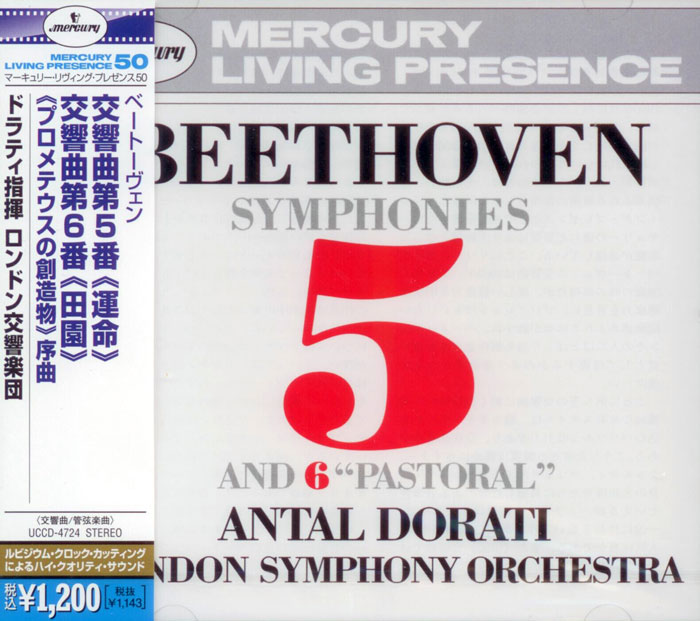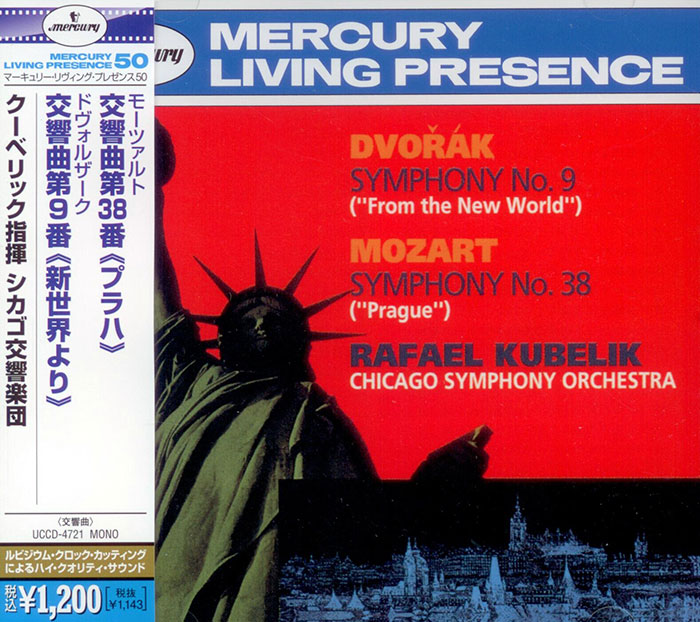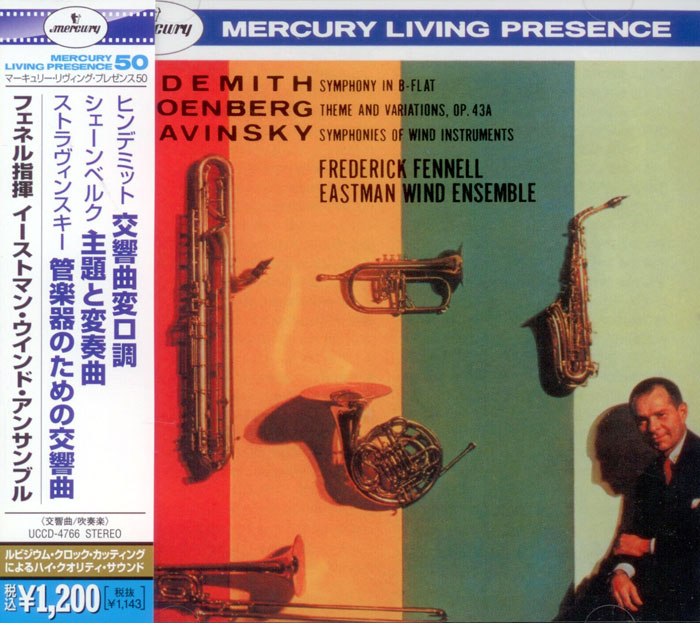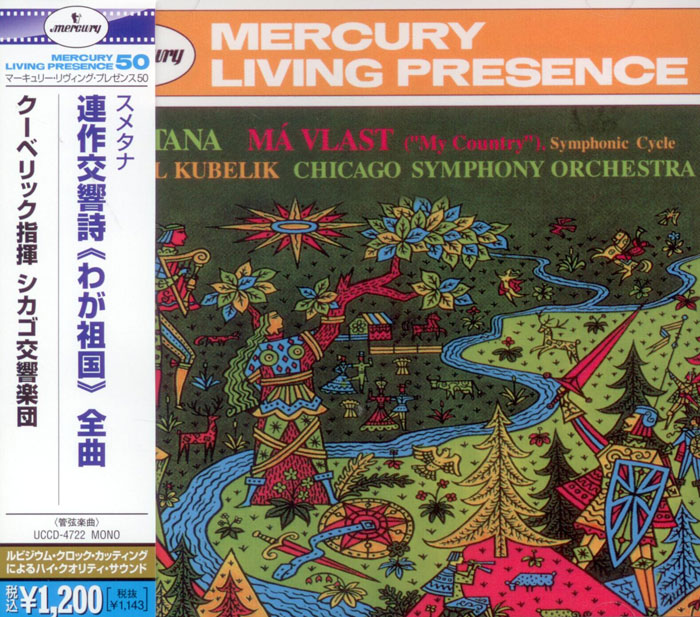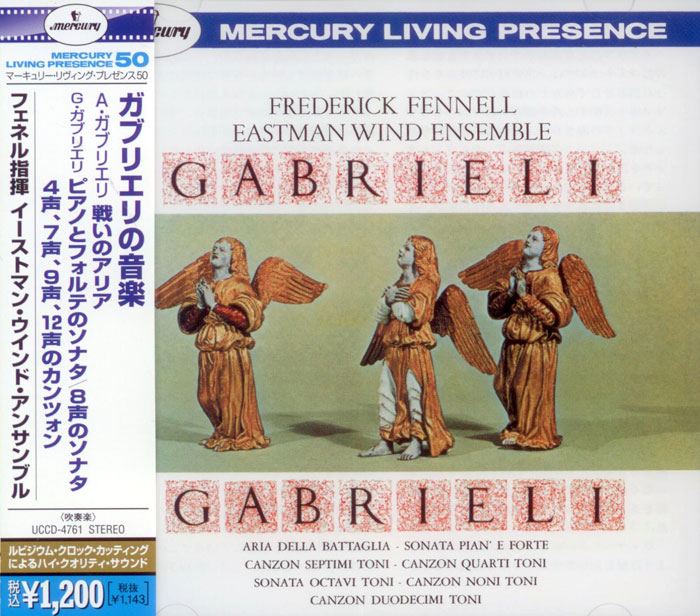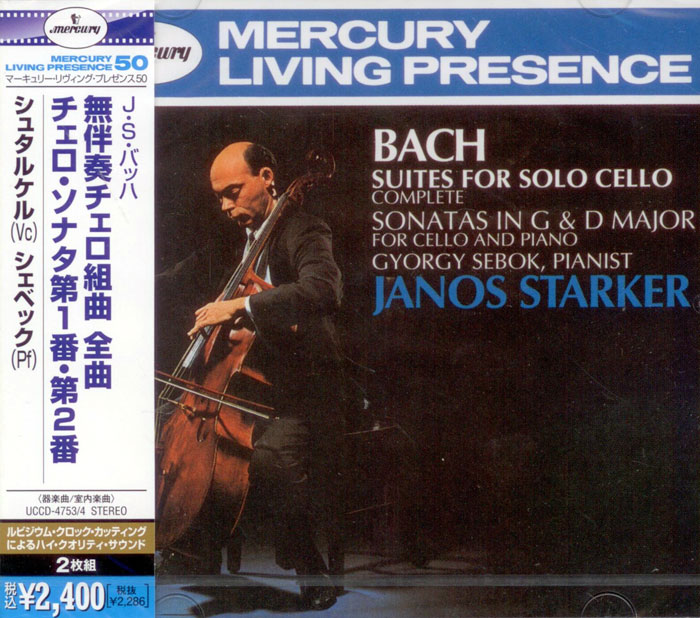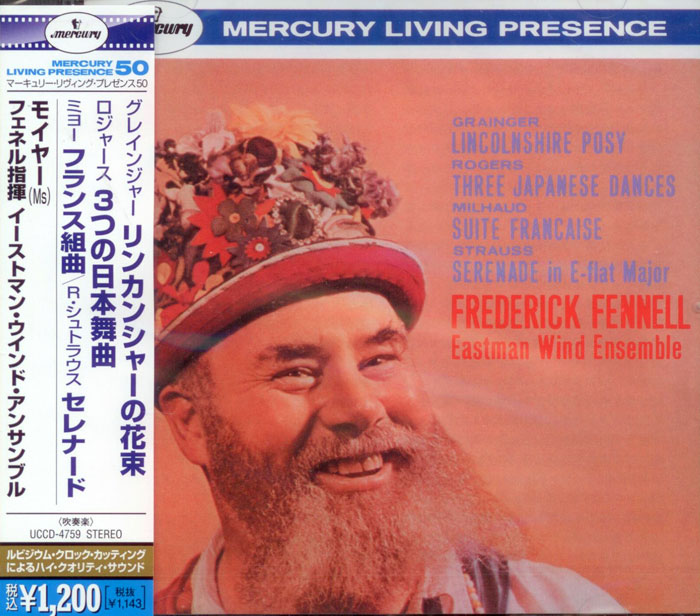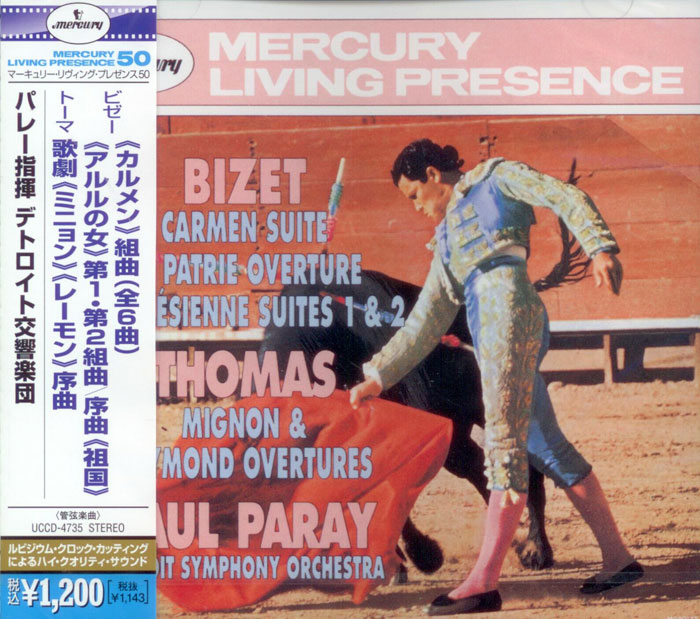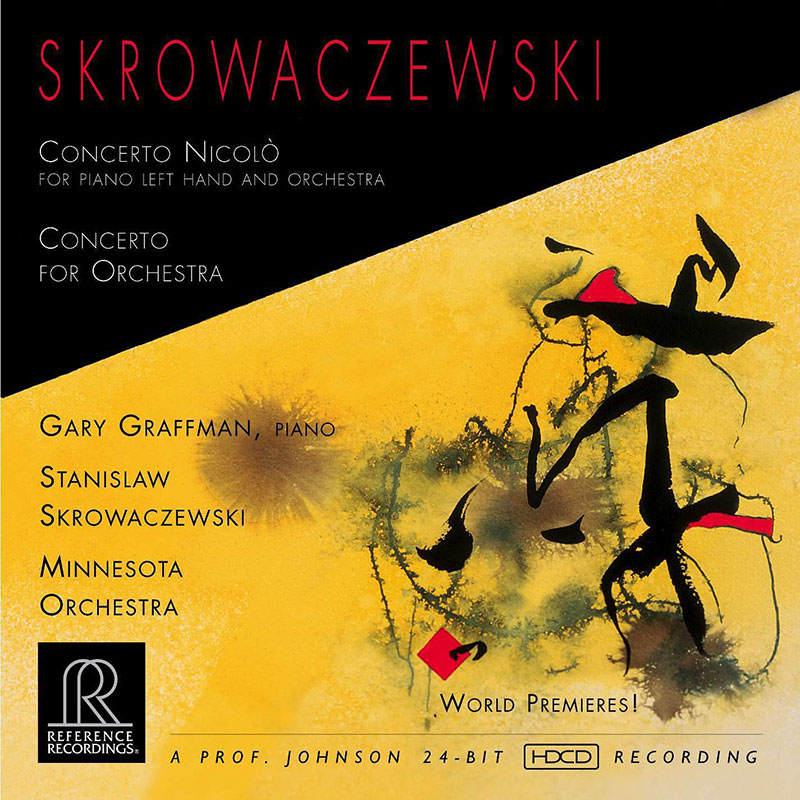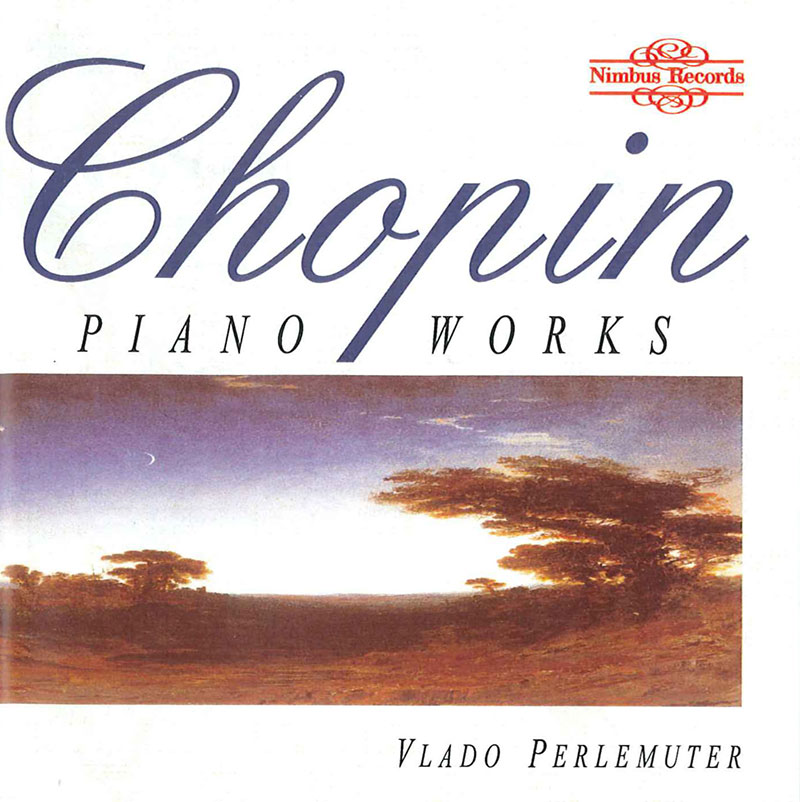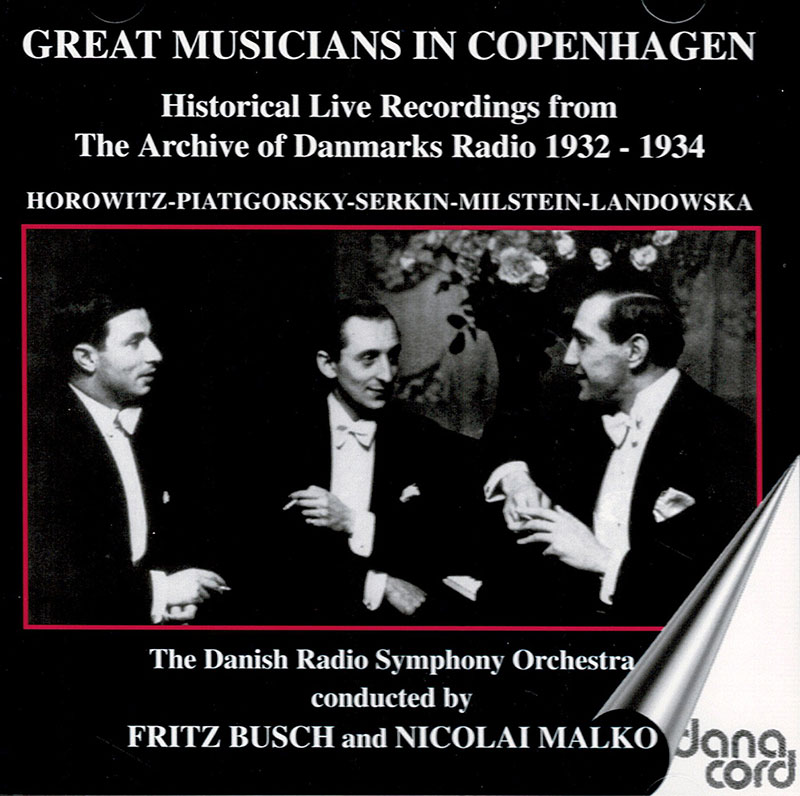Logowanie
Dlaczego wszystkjie inne nie brzmią tak jak te?
Chai Lang, Fan Tao, Broadcasting Chinese Orchestra
Illusive Butterfly
Butterly - motyl - to sekret i tajemnica muzyki chińskiej.
Brzmią jak sen na jawie
KHACHATURIAN, SHOSTAKOVICH, Antal Dorati, Stanislaw Skrowaczewski, The London Symphony Orchestra
Gayne / Symphony No. 5 in D minor, Op. 47
Stanisław Skrowaczewski,
Winylowy niezbędnik
ClearAudio
Cartridge Alignment Gauge - uniwersalny przyrząd do ustawiania geometrii wkładki i ramienia
Jedyny na rynku, tak wszechstronny i właściwy do każdego typu gramofonu!
ClearAudio
Harmo-nicer - nie tylko mata gramofonowa
Najlepsze rozwiązania leżą tuż obok
IDEALNA MATA ANTYPOŚLIZGOWA I ANTYWIBRACYJNA.
Osobowości
SKROWACZEWSKI, Stanislaw Skrowaczewski, Minnesota Orchestra
Concerto Nicolo for piano left hand and orchestra
WORLD PREMIERE!
HAYDN, Hermann Scherchen, Willis Page
Haydn Sinfonia Concertante in B fat, Op. 84 / Haydn Symphony No. 100 Military Symphony
- Sinfonia Concertante
- 1. Allegro 8:56
- 2. Andante 5:55
- 3. Finale. Allegro con spirituo 6:21
- Symphony No. 100
- 1. Adagio; Allegro 6:24
- 2. Allegretto 5:11
- 3. Menuetto: Moderato 4:53
- 4. Presto 4:30
- Hermann Scherchen - conductor
- Willis Page - conductor
- Vienna Philharmonic - orchestra
- New Orchestral Society of Boston - orchestra
- HAYDN
Haydn's early work dates from a period in which the compositional style of the High Baroque (seen in Bach and Handel) had gone out of fashion. This was a period of exploration and uncertainty, and Haydn, born 18 years before the death of Bach, was himself one of the musical explorers of this time.
An older contemporary whose work Haydn acknowledged as an important influence was Carl Philipp Emanuel Bach.
Tracing Haydn's work over the six decades in which it was produced (roughly, 1749 to 1802), one finds a gradual but steady increase in complexity and musical sophistication, which developed as Haydn learned from his own experience and that of his colleagues. Several important landmarks have been observed in the evolution of Haydn's musical style.
In the late 1760s and early 1770s Haydn entered a stylistic period known as "Sturm und Drang" (storm and stress). This term is taken from a literary movement of about the same time, though it appears that the musical development actually preceded the literary one by a few years. The musical language of this period is similar to what went before, but it is deployed in work that is more intensely expressive, especially in the works in minor keys. James Webster describes the works of this period as "longer, more passionate, and more daring." Some of the most famous compositions of this time are the "Farewell" Symphony No. 45, the piano sonata in C minor (Hob. XVI/20, L. 33), and the six string quartets of Op. 20 (the "Sun" quartets), all from 1772. It was also around this time that Haydn became interested in writing fugues in the Baroque style, and three of the Op. 20 quartets end with such fugues.
Following the climax of the "Sturm und Drang", Haydn returned to a lighter, more overtly entertaining style. There are no quartets from this period, and the symphonies take on new features: the 1rst movements now sometimes contain slow introductions, and the scoring often includes trumpets and timpani. These changes are often related to a major shift in Haydn's professional duties, which moved him away from "pure" music and toward the production of comic operas, which were very popular in 18th Century Italy. Several of the operas were Haydn's own work (see List of operas by Joseph Haydn); these are seldom performed today. Haydn sometimes recycled his opera music in symphonic works, which helped him continue his career as a symphonist during this hectic decade.
In 1779, an important change in Haydn's contract permitted him to publish his compositions without prior authorization from his employer. This may have encouraged Haydn to rekindle his career as a composer of "pure" music. The change made itself felt most dramatically in 1781, when Haydn published the six string quartets of Opus 33, announcing (in a letter to potential purchasers) that they were written in "a completely new and special way". Charles Rosen has argued that this assertion on Haydn's part was not just sales talk, but meant quite seriously; and he points out a number of important advances in Haydn's compositional technique that appear in these quartets, advances that mark the advent of the Classical style in full flower. These include a fluid form of
phrasing, in which each motif emerges from the previous one without interruption, the practice of letting accompanying material evolve into melodic material, and a kind of "Classical counterpoint" in which each instrumental part maintains its own integrity. These traits continue in the many quartets that Haydn wrote after Opus 33.
In the 1790s, stimulated by his England journeys, Haydn developed what Rosen calls his "popular style", a way of composition that, with unprecedented success, created music having great popular appeal but retaining a learned and rigorous musical structure. An important element of the popular style was the frequent use of folk or folk-like material, as discussed in the article Haydn and folk music. Haydn took care to deploy this material in appropriate locations, such as the endings of sonata expositions or the opening themes of nales. In such locations, the folk material serves as an
element of stability, helping to anchor the larger structure. Haydn's popular style can be heard in virtually all of his later work, including the twelve London symphonies, the late quartets and piano trios, and the two late oratorios.
The return to Vienna in 1795 marked the last turning point in Haydn's career. Although his musical style evolved little, his intentions as a composer changed. While he had been a servant, and later a busy entrepreneur, Haydn wrote his works quickly and in profusion, with frequent deadlines. As a rich man, Haydn now felt he had the privilege of taking his time and writing for posterity. This is reflected in the subject matter of The Creation (1798) and The Seasons (1801), which address such weighty topics as the meaning of life and the purpose of humankind, and represent an attempt to render the sublime in music. Haydn's new intentions also meant that he was willing to spend much time on a single work: both oratorios took him over a year to complete. Haydn once remarked that he had worked on The Creation so long because he wanted it to last.
The change in Haydn's approach was important in the history of music, as other composers soon were following his lead. Notably, Beethoven adopted the practice of taking his time and aiming high.
Nagranie dostępne w formatach i na nośnikach:
Płyta CD, bezpośrednia kopia z kompuetra masteringowego, na Gold CD-R
HQCD (High Quality Compact Disc) Płyta do odtworzenia w każdym typie czytników CD i DVD
Studyjny plik FLAC o rozdzielczości 24bit 96khz
Elementy toru masteringowego
• Digital: Digital Audio Denmark AX24 Analog to Digital Converter
• Lynx AES16 used for digital I/O Antelope Audio Isochrone OCX Master Clock
• Weiss Saracon Sample Rate Conversion Software Weiss POW-r Dithering Software
• Analog: Studer 810 Reel to Reel with JRF Magnetics Custom Z Heads & Siltech wiring
• Aria tape head pre-amp by ATR Services
• Manley Tube Tape Pre-amps Modified by Fred Volz of Emotive Audio
• Cables: Purist Audio Design, Pure Note, Siltech
• Power Cords: Purist Audio Design, Essential Sound Products
• Vibration Control: Symposium Acoustics Rollerblocks,Ultra platforms, Svelte shelves
• Sonic Studio CD.1 Professional CD Burner using Mitsui Gold Archival CD's
***********************

Robert Witrak - meloman, audiofil, inżynier jest jednym z nielicznych na świecie kolekcjonerów analogowych taśm z nagraniami wykonanymi w technologii zapisu na dwóch i czterech ścieżkach. Słowem – zbiera taśmy magnetofonowe z profesjonalnie zarejestrowanymi koncertami wielkich orkiestr, słynnych solistów i sławnych dyrygentów. Zbiera materiały źródłowe, najlepsze pod względem jakości i wierności brzmienia, nie przetworzonych, bez ingerencji bezdusznej elektroniki. I, co najważniejsze – utrwalonych w złotych latach współczesnej fonografii. To nagrania o jakości Living Stereo, Mercury Living Presence czy Everest!
Wiele z tych rejestracji uzyskało już status „public domain” – wygasły do nich majątkowe prawa autorskie, nie ma więc ograniczeń formalno-prawnych by pozostawały one w sejfach i magazynach kolekcjonerów. Te cymelia, unikatowe rejestracje, koncerty o wartości historycznej nie mniejszej niż ich walory artystyczne, mogą więc wejść do obiegu kulturowego całego świata. Dzięki firmie HDTT. High Definition Tape Transfers.
Proces reprodukcji tych archiwalnych nagrań zaczyna się od starannego przygotowania taśmy-matki. Musi ona być nie tylko przechowywana w szalenie rygorystycznie warunkach (odpowiednia temperatura, wilgotność, brak obciążeń mechanicznych, nieustanne przekładanie), ale także poddawana specjalistycznej konserwacji. W nieskazitelnym stanie technicznym, zarówno pod względem mechanicznym jak i elektronicznym, musi być utrzymywany cały tor dźwiękowy. Szczególnie ważna jest perfekcyjna praca magnetofonu i stan głowicy. To warunki rzeczywiście wiernego przeniesienia jakości nagrania analogowego na nośnik cyfrowy.
Efekt? Efekt tej benedyktyńskiej pracy, wykonanej z wielkiej miłością do doskonałej jakości muzyki, jest wprost oszałamiający.
NIE ZNAJDĄ PAŃSTWO DZIŚ NA RYNKU NAGRAŃ O JAKOŚCI - W ZAKRESIE DYNAMIKI I PRAWDY BRZMIENIA, A TAKŻE WARTOŚCI ARTYSTYCZNEJ - PORÓWNYWALNEJ ZE STANDARDEM WYZNACZONYM PRZEZ HDTT!
Jakość brzmienia da się porównać tylko do muzyki granej na żywo!
NOŚNIKI.
Aby było możliwe tak wierne odwzorowanie na nośniku cyfrowym jakości analogowego brzmienia, opracowano nowy nośnik i technologię jego przygotowania:
High Quality CD
Jest to nowy standard w dziedzinie zachowania jakości oraz wierności muzyki nagranej w technologii analogowej i przeniesionej na płytę kompaktową, do odtworzenia w każdym typie czytnika na świecie. Autorem tej technologii jest Taiyo Yuden. Wykorzystał on materiały o szczególnej przejrzystości i jednorodności, odpowiednio zabarwione, bezbłędnie wręcz przyjmujące nanoszone na nie informacje. Nagrywanie tych płyt jest procesem długotrwałym, odbywa się w czasie rzeczywistym. Moglibyśmy wręcz użyć określenia – direct-to-disc. Proces nagrywania odbywa się w urządzeniu, które generuje najniższy z notowanych dziś współczynnik błędów (jitter). Innymi słowy – uzyskujemy zapis o najwyższych parametrach. Jako źródło dźwięku wykorzystywany jest studyjny zmodyfikowany magnetofon stacyjny. Dźwięk przetwarzany jest następnie przez renomowane przetworniki Weiss digital A/D. W procesie masteringu używane są audiofilskiej klasy interkonekty oraz komponenty firmy Symposium, tłumiące wibracje i zakłócenia (pinch-rolki, osie, prowadnice).
Technologia HQCD pozwala wytworzyć najlepsze płyty CD na świecie. Dźwięk z nich płynący charakteryzuje się niesłychaną głębią i przejrzystością oraz lepiej rozłożoną sceną muzyczną.
Płyty HQCD nagrane przez HDTT – to zupełnie nowy, nieznany wcześniej wymiar i kosmos dźwięku!
DVD-Audio
Materiały z HDTT dostępne są także w postaci płyt DVD-Audio, do odtworzenia wyłącznie w czytnikach DVD i Blu-ray. Format 24/196 zapewnia nieporównywalną z klasycznymi czytnikami CD jakość odtwarzanej muzyki. Ta kwestia nie podlega żadnej dyskusji.
Pliki FLAC
Jednak najbardziej wyrafinowana postacią materiałów z HDTT są pliki flak o jakości 24bit/96kHz oraz 24bit/192kHz.
FLAC – to format bezstratnej kompresji dźwięku. W przeciwieństwie do innych kodeków dźwięku takich jak Vorbis, MP3 i AAC (każdy z nich powoduje niewielkie ale jednak wyraźnie odczuwane ingerowanie w strukturę danych, powoduje słyszalną kompresję), kodek FLAC nie usuwa żadnych danych ze strumienia audio. Otrzymujemy więc w wyniku dekompresji dźwięk tożsamy z pierwowzorem. Format FLAC jest dziś wykorzystywany przez większość oprogramowania do edycji i odtwarzania dźwięku. Powtórzmy – muzyka z plików FLAC nie ma żadnej konkurencji ze strony innych formatów czy nośników. Jest reprodukowana na wyższym poziomie niż z płyt HQCD.
To byłoby na tyle – chciałoby się przywołać pełne bezpretensjonalności zawołanie poety. Dzięki HDTT, HQCD oraz DVD-Audio a nade wszystko plików FLAC wchodzą Państwa w najbardziej intymny, niczym nie ograniczony związek z Jej Wysokością Muzyką.
Wielu wrażeń!






